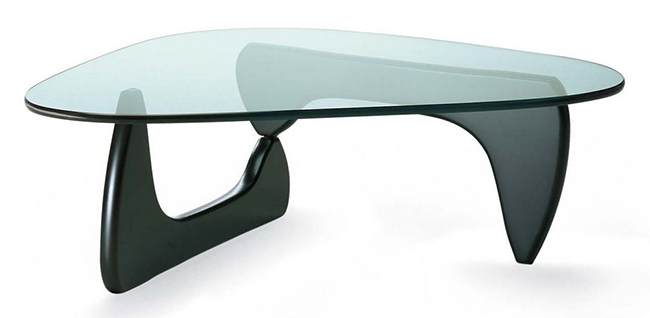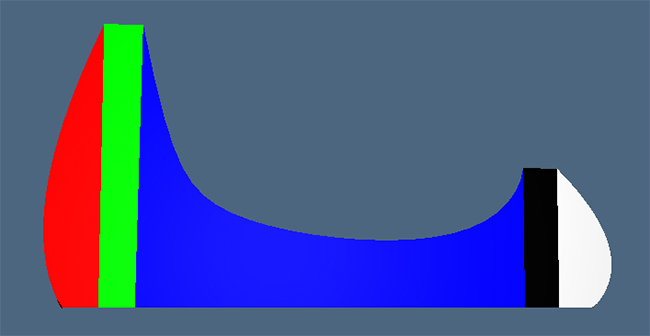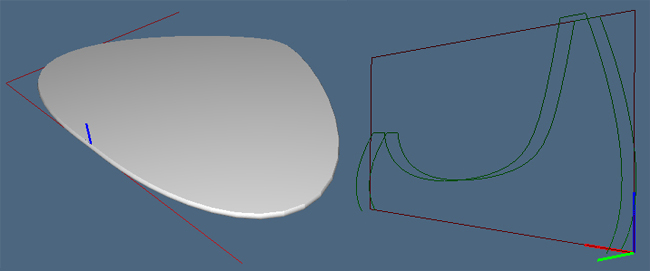Table Isamu Noguchi
The Isamu Noguchi table is a piece of modernist furniture first produced in the mid-20th century. Introduced by Herman Miller in 1947, it was designed in the United States by artist and industrial designer Isamu Noguchi. The table comprises a wooden base and a heavy plate glass top. The base was carved from solid walnut, and consisted of two identical parts; when one part is reversed and connected to the other by a pivot rod, a base appears which has a smoothly flowing form and an interest rarely found in furniture of any period. The shape of the two wooden supports produces a self-supporting and stable base, allowing the heavy plate glass top to be placed without the use of connectors.

The model of the table is composed by two parts:
- Surface
- Base
The base is formed by two identical but suitably rotated and positioned pieces. The single element, which along with its twin composes the base, was modeled with the same principle of the surface described above: drawing several Bezier curves which interpolation creates different surfaces that put together form the element wanted.
Given the complexity and the particular curvature of the surface which determines the profile of the element of the base, it was decided to decompose the latter in different sections.

Below is shown the result (in Plasm.js) of the modeled parts.


